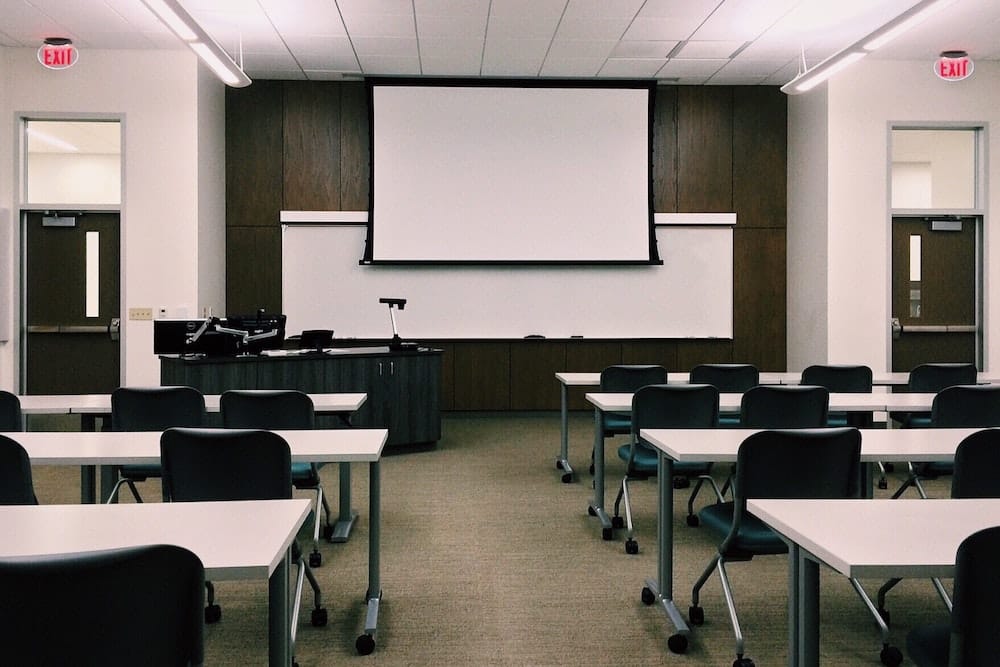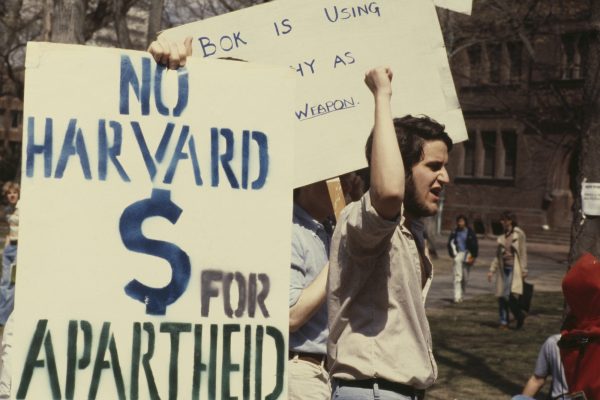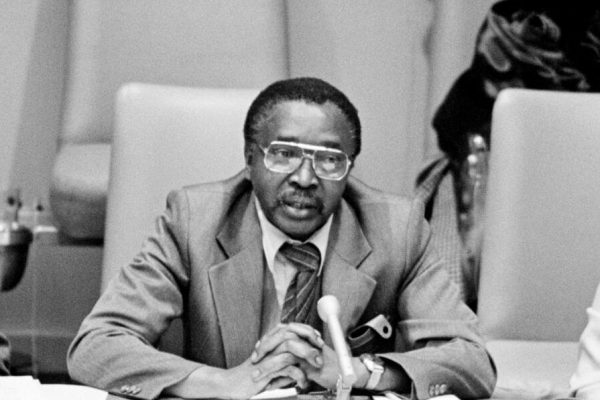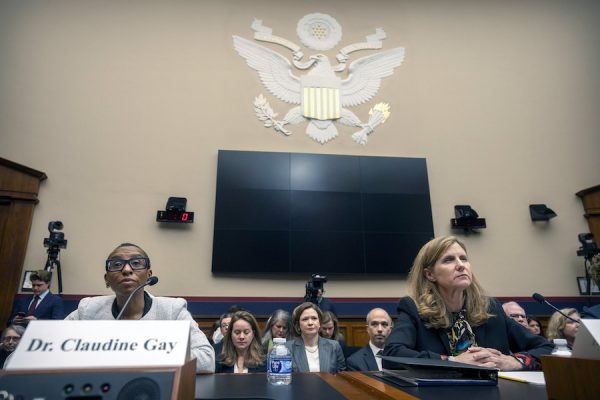I recently attended an online town hall at the college where I teach regarding education under COVID-19. It had the qualities one would expect: a mix of updates, confidence building, but also a great deal of uncertainty. This tension was revealed with greater clarity in a New York Times opinion piece published last weekend by Christina Paxson, president of Brown University. Arguing that “College Campuses Must Reopen in the Fall,” Paxson offered little concrete logistical detail about rethinking classroom space and student and faculty accommodations that would apply beyond a wealthy Ivy League institution.
That neglect reflects a deeper problem: whose voices are heard in this process of reopening. As colleges and universities scramble to put together different scenarios for this fall, we have much to weigh and consider, but one of the most urgent questions is precisely how these decisions are going to be made, and by whom.
I share many of the concerns held by my college’s administration about student enrollment, budgetary outlooks, and staff employment. Like many colleagues, I readily grasp the challenges that lie ahead for students who are making important decisions about their future. Students, both graduate and undergraduate, have been organizing and going on strike across the country—including the New School, Columbia, Vassar, Pomona, and the University of Chicago—over issues of tuition, grading, and fellowship support, which has been reduced or cut for many.
Against this backdrop of growing discontent, I am equally apprehensive about certain assumptions being made about faculty of all ranks, especially their capacity to handle teaching and other responsibilities under the pandemic. The operating notion seems to be that faculty across the board are robust and healthy, able to withstand the stress and emotional costs, and even, it seems, the medical threat it poses to our lives. A positive attitude—what some have more critically referred to as “toxic positivity”—has been positioned by university administrators as the main prophylactic against COVID-19 and for regaining the financial bottom line.
Faculty members are a diverse class, of course, spanning a range of ages, abilities, and medical histories. We are also diverse in terms of income level, personal savings, and other safety nets designed to assist in times of illness and leave. The divide between tenured/tenure-track faculty and adjunct faculty has become even starker in the present moment, with many in the latter category facing terminated contracts and the disaster of lost salaries and benefits. As many have observed, the current crisis has vividly exposed inequalities, both known and those less recognized, across academia and society more generally.
With these conditions in mind, the question remains what claims faculty may have recourse to in the face of school administrations seeking a return to normal routine. To be direct, I am concerned about my personal health and how my teaching and on-campus activity may impact the health of others. I am concerned about facing medical costs from exposure and illness, even if temporary. Private matters like health are difficult to air publicly, and I fear that faculty voices and rights are being marginalized. The decades-long trend of administrative bloat, combined with increasing reliance on temporary faculty, appears structurally predisposed to minimize faculty input.
Existing faculty rights largely concern the right to work. Colleges and universities by law operate under the guidelines of the U.S. Equal Employment Opportunity Commission, which are principally concerned with discrimination on the basis of race, religion, gender, sexual orientation, national origin, disability, and age. These guidelines are primarily intended for situations of hiring and promotion, workplace harassment, and workplace accommodation, with regard to such matters as respect for religious practices and building access for employees who are physically disabled. A parallel set of faculty rights concern freedom of expression, extending from the First Amendment. The American Association of University Professors (AAUP) lists this right to academic freedom first in its mission statement. However, the AAUP issued a statement last month expressing its concern about faculty involvement in decision-making at colleges and universities.
How might these existing rights apply to the situation of COVID-19? The answer depends on the epidemiological facts. While much remains uncertain, it is clear that the virus is transmitted easily, that institutions appear to be key vectors for the virus, and that there is no vaccine. These observations taken together highlight the risks for faculty members. One immediate set of questions is purely logistical. Is social distancing possible in existing classrooms? Will communal areas, like libraries, remain closed? Will these spaces be regularly disinfected? Another set of questions concerns what will happen if cases are detected. If a student, professor, or staff member becomes ill, is a campus to be shut down again? Do students and faculty remain, in order to prevent the spread of the virus? Or will they be allowed to disperse, but with great disruption for teaching and at great cost to them and their families? More tragic to imagine is what happens if a faculty member, staff, or student dies. Is a college or university liable? Is that institution responsible for not taking appropriate measures to work against the spread of infection? All of the questions, and many others, must be answered clearly and unambiguously.
As a faculty member I do not pretend to have ready or universal solutions. But I do think faculty opinion should be involved, and, as much as I would like to return to my past routine of teaching, developing solutions should consist of more than simple consent to what college and university administrators decide. Just like any other community member, faculty members are vulnerable to the disabling effects and mortality of the disease. By the same token, we are just as liable to be asymptomatic vectors. These observations pose ethical questions as to how far we should be willing to put our own health at risk, and what responsibilities we have to others in terms of how we might unwittingly spread infection.
One option is the right not to work. By this I do not mean not working at all, but the right not to work under certain conditions. For example, given that a number of schools are seeking to re-open before a vaccine is available, one prospect is to give faculty members the choice of whether to continue teaching online or not. This proposal could benefit at-risk colleagues, while allowing the option of in-class teaching if a faculty member prefers it.
Another idea could be to shift the balance of teaching loads to later semesters. A three-course load in the fall, say, could be moved to the spring or later, depending on a school’s curriculum. While this option does not eliminate exposure completely, it could limit the level of exposure with fewer classes in the fall semester. A similar suggestion would be to have classes meet once a week for extended periods—three hours one day versus three one-hour periods over a week—which could limit contact on a daily basis. Finally, a combination of these options could be deployed: a choice of whether to teach online or not; a choice of whether to defer teaching certain courses to a later semester; and, for those deciding to teach in person, a choice to teach classes in a single session, once a week.
This range of options could be an organizational headache for registrars, but it could also map a middle ground between closing for an entire semester and re-opening as normal with the risk of having to shut down abruptly again. Furthermore, the right not to work draws upon existing EEOC guidelines. It could fall within protection for employees in need of “reasonable workplace accommodation” for reasons of “disability or genetic information.” At the moment, given limited testing and the still uncertain epidemiological nature of COVID-19, faculty members would generally fall within this latter category, even without pre-existing conditions, until a vaccine is available. Agreement to such a right would equally mitigate against “immunoprivilege,” whereby those who are unaffected have greater job security and no medical expenses. The right not to work equalizes matters by enabling those who are at a greater risk of illness avoid exposure, without compromising job security, and by extension avoid costly medical expenses.
Declaring this right does come from a position of privilege relative to adjunct faculty without permanent contracts and graduate students who face cuts in support and dire job prospects in the foreseeable future. Unemployment figures across the economy are staggeringly bleak. But these issues should not be seen as disconnected. The marginalization of faculty input, the furloughing of temporary faculty, and the cutting of financial support for graduate students are all part of the same financial equation managed by university administrators aiming to cut expenses and salvage, from a budgetary standpoint, what remains of the academic year. Paxson betrays this logic when she invokes the “basic business model” for colleges and universities and the need for tuition in order to survive. She is not alone. However, Brown’s endowment in 2019 was $4.2 billion. Short-term fiscal goals should not outweigh the long-term lives of students, staff, and faculty. The recent statement and petition by tenured and tenure-track faculty in solidarity with contingent faculty and graduate student workers demonstrates the potential for organizing faculty voices across ranks against a precarious academic system that has thrived on exploiting the most vulnerable.
To be clear, an eventual return to routine is essential. Students have futures ahead. Staff members, particularly those who have been furloughed, want to return to work. It is imperative that we, as faculty, reaffirm our commitment to our teaching mission. But faculty should have certain rights with regard to our health and safety and that of our families, students, and colleagues. Even among those who are infected and recover, there are serious medical costs to consider and long-term effects that are unknown. These private matters should not be neglected. They should instead form an integral part of the stated commitments of colleges and universities to the safety and well being of the students, staff, and faculty they serve. The right not to work is one way of negotiating this situation.








